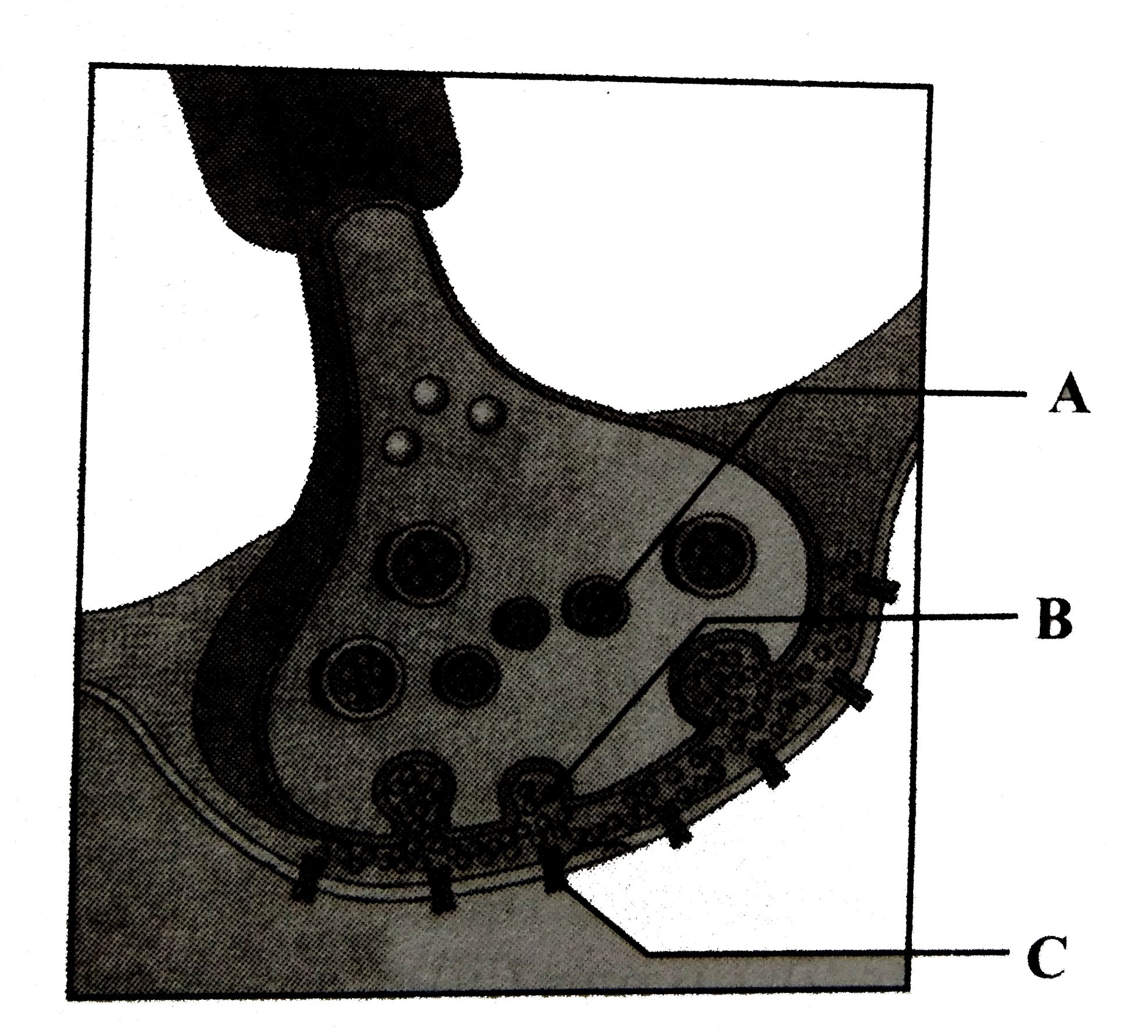Chemicals which are released at the synaptic junction are called
A
hormones
B
neurotransmitters
C
cerebrospinal fluid
D
lymph
Video Solution
Text Solution
Neurotransmitters are involved in the transmission of impulses at the chemical synapses. They are present in the synaptic vesicles at axon terminals.
Whereas, hormones are non-nutrient .chemicals which act as intercellular messengers and are produped in trace amounts.
Cerebrospinal fluid is present in subarachnoid space. It provides shock resistance to brain .
Lymph is a colourless fluis containing specialised lymphocytes which are responsible for the immune responses of the body. It is important carrier for nutrients, hormones, etc. Fats are absorbed through lacteals (lymph vessels) present in microvilli of intestine.
|
Topper's Solved these Questions
- NEURAL CONTROL AND CO-ORDINATIONBOOK - NCERT EXEMPLARCHAPTER - NEURAL CONTROL AND CO-ORDINATIONEXERCISE - VERY SHORT ANSWER TYPE QUESTIONS
11 Videos
- NEURAL CONTROL AND CO-ORDINATIONBOOK - NCERT EXEMPLARCHAPTER - NEURAL CONTROL AND CO-ORDINATIONEXERCISE - SHORT ANSWER TYPE QUESTIONS
6 Videos
- MORPHOLOGY OF FLOWERING PLANTSBOOK - NCERT EXEMPLARCHAPTER - MORPHOLOGY OF FLOWERING PLANTSEXERCISE - Long Answer Type Questions
8 Videos
- PHOTOSYNTHESIS IN HIGHER PLANTSBOOK - NCERT EXEMPLARCHAPTER - PHOTOSYNTHESIS IN HIGHER PLANTSEXERCISE - Long Answer type Question
13 Videos
Similar Questions
Knowledge Check
The chemicals which regulate the synaptic transmission at chemical synapses are called
ANeurohormonesBNeurotransmittersCIodothyroninesDSecond messengersA synaptic cleft is
Athe space present inside the presynaptic neuronBthe space present inside the postsynaptic neuronCthe space separating the pre and postsynapitc neuronsDthe space present inside the synaptic vesiclesThe given diagram shows axon terminal.Select the option that correctly matches the steps in transmission of impulses (list i-vii) with the labellings (A-C) in diagram.

(i)Chemicals called neurotransmitters are released in the synaptic cleft through ion channels.
(ii)When an impulse arrives at the axon terminal, it stimulates the movement of synaptic vesicles.
(iii)Neurotransmitters are endocytosed into the neurons.
(iv)The ions channels close with the binding of neurotransmitters to their specific receptors vesicles.
(v)Synaptic vesicles move towards the membrane where they fuse with the plasma membrane.
(vi)Neurotransmitters are released in the synaptic cleft.
(vii)The released transmitters bind to their specific receptors on post-synaptic membraneAA B C(ii) (iii) (i)BA B C(v) (vi) (iv)CA B C(ii) (vi) (vii)DA B C(v) (iii) (iv)
Name some chemicals that are released by acrosome during fertillization
View SolutionThe substance which decreases the rate of a chemical reaction is called-
View SolutionThe substance which decreases the rate of a chemical reaction is called :
View SolutionThe substance which decreases the rate of a chemical reaction in called a/an:
View SolutionThe reverse voltage at which the current increases enormously, in a p-n junction, is called
View Solution
